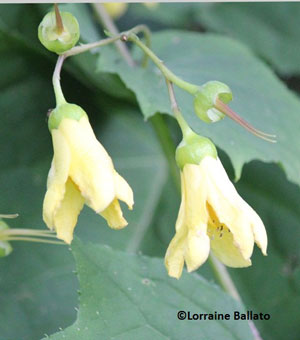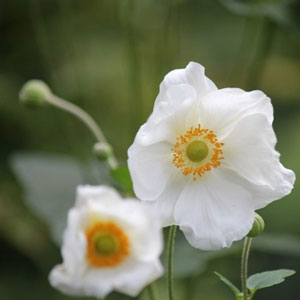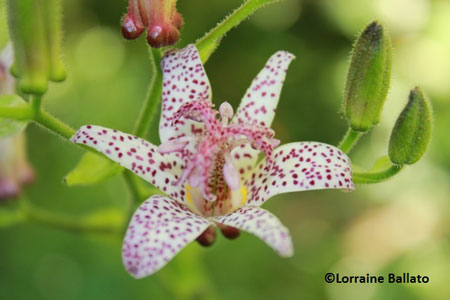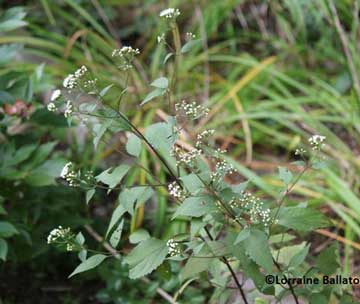Anyone can have a great garden in June. With dependable roses and the availability of plants in garden centers, box stores and even at the grocery store, it's hard not to get swept away by the assault of color, even for the most budget minded person. Ah, but to have a colorful garden in the late season even into October, well that's an entirely different achievement.
Asters and mums are the expected fall perennials along with sedums and ornamental grasses. They do a fine job of picking up where the cheerful summer flowers left off as they parade in containers and borders. But maybe you can add a little more color to punch up your late season garden without giving up the traditional touches you look forward to. Give all fall flowering beauties a general fertilizer application in mid-summer.
 Yellow Wax Bells
Yellow Wax Bells
© Lorraine Ballato
Yellow wax bells (Kirengoshoma palmata) looks great in a part shade area. The soft yellow bell-shaped flowers grow in clusters. The palmata part of its name refers to its attractive maple-like leaves. A full size plant has a shrubby look and is rarely bothered by insects or disease. It will get to about 4 feet high and wide if it is happy. They aren't fussy about soil but won't tolerate very dry conditions. The bloom cycle is fairly long as each flower opens at a different time from about the beginning of September.
 Japanese Anemone
Japanese Anemone
© Lorraine Ballato
One of the longest blooming fall perennials is Japanese anemone (Anemone hupehensis). It masquerades as "fall blooming anemone" and as "windflower." No matter what you call it, it is a winner as it delivers color for about two months. You can get it in white, various shades of pink and purple/lavender. The show starts in September with the two to three inch flowers that sit on top of two to three foot wiry stems in multiple clusters. Those stems sway easily in the wind which is how it gets its common name. Plus the pollen from the open flower is a great food source for bees as the season winds down in a part shade garden. It can take more sun but then you must be sure to give it sufficient moisture.
 Toad Lilies
Toad Lilies
© Lorraine Ballato
If you want to have a race to the first frost, make sure you get some toad lilies (Tricyrtis hirta) in your garden. These are about the latest blooming perennials around. They start revealing their exceptional orchid-like flowers in mid-September and continue until frost knocks them down. Growing about three to four feet tall, they spread by underground runners when they are happy and form show stopping colonies in shady, moist gardens. They are trouble free.
For sun lovers, you can’t go wrong with goldenrod. Many people confuse it with ragweed which it definitely is not. Goldenrod blooms late season with a profusion of yellow flowers and is extremely easy to grow. There are many versions of it (weed, wildflower, cultivated variety) and depending on which one you choose, it can be upright or cascading. Bees and butterflies flock to it as their nectar sources shrink with the waning daylight.
 Joe Pye Weed 'Chocolate'
Joe Pye Weed 'Chocolate'
© Lorraine Ballato
Other sun lovers come from the broad family of eupatorium which you may better recognize as Joe Pye Weed. But he has a less assertive “cousin” called Joe Pye Weed ‘Chocolate’. This one has a much more delicate look starting with smaller toothed bronze-purple foliage topped by sprays of fragrant white flowers and dark stems. Be aware that it sows itself around the garden so be prepared to find it where you least expect it. Then just transplant it to where you think you’ll enjoy it most. You’ll find butterflies all over this compact plant that only grows to about four feet by 2 feet before a frost end the season.
A visit to a local garden center that is still getting late season plant deliveries other than mums will reveal many more options than these. You will be amazed at what you will discover.
by Lorraine Ballato, Garden writer and author